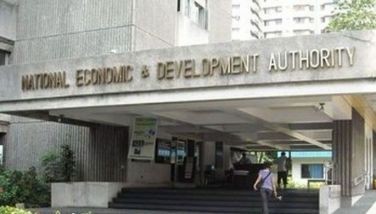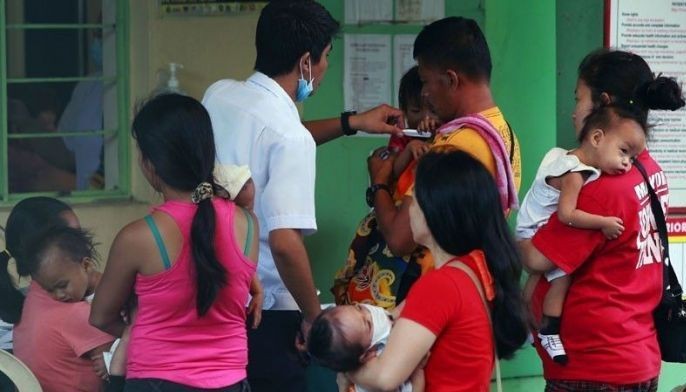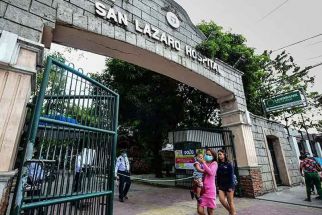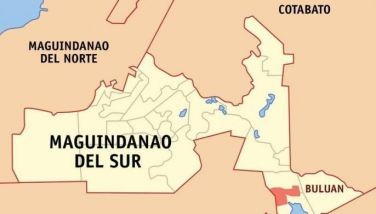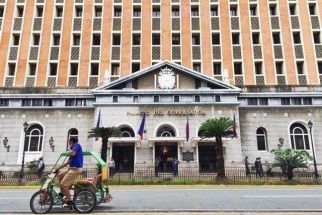DTI seeks SRP on well-milled rice

MANILA, Philippines — Trade Secretary Ramon Lopez yesterday said putting a cap on the price of well-milled commercial rice is strongly being considered by his department to ensure consumers would get cheaper options when stocks of the National Food Authority (NFA) are depleted.
Lopez said the Department of Trade and Industry (DTI) would be proposing a policy that would put in place suggested retail price (SRP) on well-milled commercial rice.
The commercial well-milled rice is a basic variant currently being sold at about P39 per kilo, according to Lopez.
The NFA, on the other hand, sells two kinds of rice – regular milled rice for P27 per kg and well-milled for P32 per kg.
“So if ever consumers can’t buy in NFA stores, they would turn to commercial stores. So what we want is for them to have something available that is affordable,” Lopez said.
The Foundation for Economic Freedom (FEF), a group composed of economists, former government officials and businessmen, earlier said the low level of NFA stocks makes the rice market vulnerable to price manipulation by rice traders.
The group said the price of rice in the country’s rice-exporting neighbors is about half the domestic price of rice.
“There is no reason why rice prices should become unstable and rise since there is plentiful supply from our neighboring countries that can be easily tapped by our private traders,” the FEF said.
The Department of Agriculture (DA) will not immediately implement President Duterte’s order to increase the NFA’s buffer stock to 60 days as several logistics and budgetary requirements still need to be considered.
Agriculture Secretary Emmanuel Piñol said in a press briefing yesterday the plan will hopefully materialize by 2020.
The NFA was brought back to the DA after a reorganization that was prompted by the differences between NFA and the NFA Council on rice policy.
In a statement, NFA administrator Jason Aquino said that during a meeting with the agency’s regional directors on April 17, he instructed the agency’s operations department to study and recommend a marketing plan for a 15-day strategic rice reserve (SRR) and 30-day stock for the lean months, and a 30-day SRR and 60-day stock for lean months.
“We have to modernize. We will not store rice but palay and we will need modern grain silos,” Piñol said.
While economists are concerned the NFA may not be able to fulfill the additional responsibility and may just serve as another financial liability to the government, Piñol said the DA will simply follow Duterte’s orders.
“The President did not make that decision from ideas taken out of the blue. He knows that climatic condition is not the only problem. The idea came from him as trade wars could affect food supply and the uncertainties brought by climate change,” he said.
The Legislative-Executive Development Advisory Council (LEDAC) requires NFA to have 15 days buffer stock at any given time and 30 days at the onset of the lean season.
However, NFA has failed to fulfill its mandate since late last year amid low palay procurement.
Aquino said the agency’s warehouse capacity is only good for 22 days and NFA merely rents areas when in need of additional space.
This is just one of the additional logistics that DA and NFA would have to consider in pursuing the 60-day buffer stock.
But Piñol stressed “the 60-day buffer stocking conforms to the recommendations made by pertinent bodies due to the effect of climate change and we do not know when we will be hit by El Niño again.”
“Worse, our neighboring countries where we get our supplies may be affected too. We could not rely on our exporting partners forever,” he added.
The DA also created an executive committee composed of the DA, NFA, Office of the President and the Department of Finance, which will serve as a complementary body to the council.
“It will be a complementary body to the NFA Council because you don’t expect to convene the council every week, so this will be the clearing house that will perform the nitty-gritty operations and then present it to the council,” Piñol said.
While functions of the executive committee are still being finalized, it will handle importation, rice supply distribution and local procurement, among others.
But policy decisions will still fall on the NFA Council, particularly on the placement of SRP on regular and well-milled rice in the market and the 60-day buffer stocking requirement.
Aquino has instructed the agency’s special bids and awards committee (SBAC) on rice importation to fast track the government-to-government procurement of 250,000 metric tons of rice for the immediate replenishment of government buffer stocks.
Duterte himself earlier directed NFA to immediately import the needed stocks as consumers continue to clamor for the P27 and P32 per kilogram NFA rice in the markets.
Aquino said the President wants government to have buffer stocks good for 60 days because Duterte knows that they should always be ready to effectively address any contingency.
But as a policy, he said, government would only import the deficiency in local production.
Aquino also ordered NFA officials to “clean” their respective offices and warehouses. He stressed that the President strictly warns against any form of corruption in all aspects of government work.
Aquino said the NFA would continue to intensify market monitoring and enforcement by partnering with agencies like the DA, DTI and the Philippine National Police (PNP) in this effort.
Sell smuggled rice
In Zamboanga City, Sen. Cynthia Villar suggested that smuggled rice seized by the Bureau of Customs (BOC) be turned over to the NFA to address its shortage in supply.
Villar, chair of the Senate committee on agriculture and food, said the NFA can just pay the BOC for the smuggled rice it will sell.
The latest attempt to smuggle rice was intercepted last Saturday by elements of the Naval Force Western Mindanao off Oluntanga, Zamboanga Sibugay aboard a Mongolian bulk carrier loaded with more than 27,000 sacks of rice with an estimated local market value of P68 million.
Villar was in Zamboanga to visit the Philippine Coconut Authority and turned over 25 decorticating machines developed by the PCA’s research center at San Ramon, Barangay Talisayan.
Villar said she is also working closely with the Philippine Rice Research Institute and the Philippine Center for Postharvest Development and Mechanization to develop and increase rice production in the country to address the supply problem.
She said local rice prices are far more expensive unlike in Vietnam, which only sells roughly at about P6 compared to P12 in the country.
She said the mechanization of farming will address the labor cost with free irrigation and increasing the quality of rice variety.
“The quality of our seeds is poor, that is why PhilRice and PhilMech should teach mechanization for better production per hectare so we can compete with Vietnam,” Villar said. – With Roel Pareño
- Latest
- Trending















